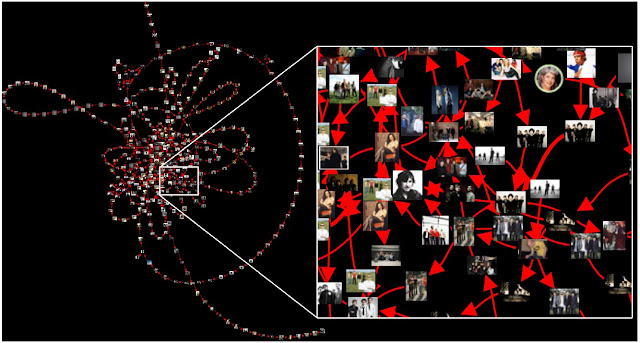Authors
Dominikus Baur
Media Informatics, University of Munich
Munich, Germany
dominikus.baur@ifi.lmu.de
Andreas Butz
Media Informatics, University of Munich
Munich, Germany
andreas.butz@ifi.lmu.de
Summary
Several methods for helping music listeners create a playlist are currently implemented. Most mp3 players utilize ID3 tags which contain album, artist, year, genre, etc information. While this information allows the user to quickly utilize and find particular songs, playlist creation requires intimate knowledge of the actual music that lies the behind the ID3 tags. Others such as Pandora, have utilized machine learning techniques to categorize songs and base future suggested songs off of the machine's recommendations. Still others, such as Last.fm, study past listening histories across thousands and thousands of users and based on the similarities between those and the user's listening history suggests future songs.
To obtain the data needed for the project, they used Audioscrobbler, Last.fm's tracking software. Using this data, they created three different types of visualizations. First is the Tangle, which is a global view of the listening history. Outer loops represent anomalies or songs that were listened to without correlations to other songs. Songs that are close to other songs are relatively similar and thickness of a line represents how often a particular sequence of song was listened to.
The second visualization algorithm is strings, which shows, in a very ordered and organized way, past listening sequences.
The third visualization is called knots and it shows the user which songs are present in several strings to give the user a better visualization of which songs they most listen to.
Users can then determine paths that their music should take along with specifying a "novelty" factor which determines how unusual the path between waypoints is.
Discussion
This sounds like it would be a really cool but novel idea for the music culture. It would be equivalent to the visualizations that iTunes and Windows Media Player offer. They're really cool to look at but no one really uses it more than a couple times. I could be wrong because I haven't exactly used it and unlike those visualizations offered by Windows and Apple, Tangle actually offers some practical usage. The 1,000 song limit is a bit of a problem though.
Subscribe to:
Post Comments (Atom)




No comments:
Post a Comment